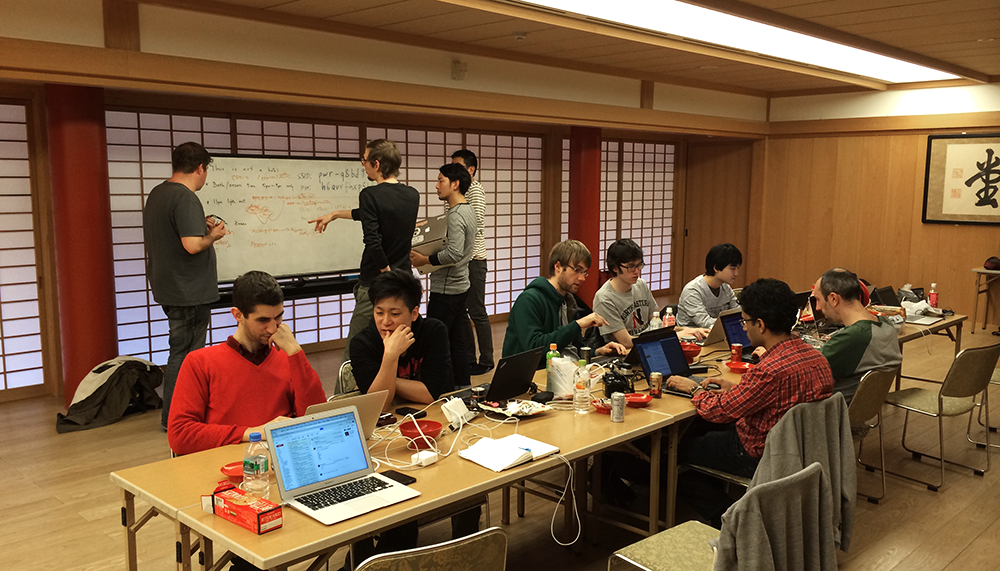Gengo-dō: Engineering the Japanese way

The Gengo engineering team worked incredibly hard in 2013, so as a combined year-end celebration and opportunity for engineers to work on special projects, we organized an overnight hackathon for our team of twelve. In Japanese, such a hackathon is known as a 開発合宿, or kaihatsu gasshuku (developers’ camp).
Programming is a creative activity, and as with most creative endeavors, too much rote activity can be numbing. To stir the creative juices, it’s helpful to occasionally change things up, like the pace or intensity. A kaihatsu gasshuku, which often takes place in a more serene environment, can help do just that.
Choosing the right venue was a challenge, but through a stroke of luck, a friend introduced us to Kenchō-ji, Japan’s oldest Zen temple, located only an hour away from our office. We were the only ones in the temple (which had full facilities to host up to 100 people), so it felt incredibly spacious.
If you decide to organize a kaihatsu gasshuku of your own, here are a few key elements that will make yours successful:
- Fast internet (obviously!)
- Healthy and nutritious food
- A relaxing atmosphere: outside noise won’t help with concentration
- Space and equipment for everyone to present the fruits of their labor
- At least one unique team activity so members can bond outside of work
The temple didn’t have the fastest internet you’d expect from Japan, but we made do with a few WiMAX modules. Because we develop on local environments with Vagrant, our connection needs were modest. For food, we hired an aspiring chef who used the temple’s industrial kitchen to prepare breakfast, lunch and dinner. The meals were delicious and catered to everyone’s dietary needs (a welcome change from the stereotypical hackathon pizza). And for our unique team activity, the temple naturally offered us zazen instruction—at 6 a.m.!
With twelve members scratching their programming itch, in the end we had eleven presentations (one was a two-man effort). Engineers worked on:
- Improvements to the support process
- Optimizations to code (some as much as 500x speed increases!)
- Profiling of code to discover further areas for improvement
- Research in improving our development and deployment process
- Prototypes of new features for our users
While these were all done outside of our usual scrum/sprint, it gave everyone a chance to focus on improving a part of our platform that was of personal importance.
If you lead an engineering team that’s been working hard in the office, you might be pleasantly surprised by what happens when you give your team a day or two to work together offsite. It’s a great way to recognize the team’s effort and see everyone in a different environment.
P.S. Our kaihatsu gasshuku was an internal activity, but if you’re interested in hearing about future public events we host, please join our Doorkeeper community page!
Go global with Gengo’s people-powered translation platform.
or Contact us



